Gartner Magic Quadrant for Wired, Wireless LAN 2019: Aruba, Cisco, Extreme Networks Lead The Way
Aruba Networks, Cisco, and Extreme Networks were crowned leaders on this year’s Gartner Magic Quadrant for Wired, Wireless LAN Access Infrastructure as four new players joined the report.

Leaders of the Pack
Gartner released its 2019 Critical Capabilities report for Wired and Wireless LAN Access Infrastructure and Hewlett Packard Enterprise's subsidiary, Aruba Networks, Cisco Systems, and Extreme Networks – now bolstered by Aerohive Networks -- found themselves in the winner’s circle.
Of the four quadrants, the “Challengers” quadrant sat empty this year as 13 vendors crowded into the “Niche Player” category, including Security specialist Fortinet, Chinese provider TP-Link, and Arista Networks’ subsidiary, Mojo Networks, to name a few. Embattled firm Huawei, and Juniper Networks, now the proud owner of Mist Systems which sat on the report last year, were named visionaries this time around.
A total of 18 wired and wireless vendors landed on the 2019 Magic Quadrant this year. Here’s who ranked as a leader, niche player, and visionary, and the strengths and weaknesses of each vendor.

The Report
The Gartner Magic Quadrant for Wired, Wireless LAN Access Infrastructure 2019 was shaped by consolidation, a trend that has continued to impact this evolving market. Ruckus in August closed its acquisition of competitor Aerohive Networks and Cambium Networks also closed its Xirrus deal during the same month. At the same time, 18 vendors made this year's Gartner Magic Quadrant for Wired, Wireless LAN, including newcomers Cambium Networks, Ruijie Networks, TP-Link, and Ubiquiti Networks.
The Magic Quadrant for the Wired and Wireless LAN market includes vendors that offer switching and WLAN hardware and have annual network service application revenue exceeding $10 million that is not entirely generated in one single country. The report also evaluates the vendors’ sales execution, including the overall effectiveness of their channel programs.

Leader -- Cisco
Cisco, according to Gartner, continues to provide the broadest wired and wireless access layer portfolio, including multigigabit switches and Wi-Fi 6-capable access points. Gartner said that San Jose, Calif.-based Cisco's management team is also successfully leveraging core competencies across both its Catalyst and Meraki product lines, and that Cisco continues to be the market share leader for campus switch and WLAN access layer connectivity.
Strengths: Cisco's DNA Center can address multivendor network management through device packs, which allow a single pane of glass for access layer wired and wireless management, Gartner said. Cisco has also improved connections between divergent product families via DNA Center.
Weaknesses: The report said that despite Cisco's plans to merge its cloud and on-premises product lines, end users should make sure that the required functionality is being delivered for the solution they are deploying, such as Cisco DNA Center on-premises DNA Assurance versus cloud-based Meraki Wireless Health. Client feedback is mixed as it relates to confusion around costs and features.

Leader -- HPE (Aruba Networks)
Aruba Networks, an HPE company that operates as a subsidiary, is the second-largest vendor in the wireless/wired LAN access layer market. The networking specialist is standing out from the pack because it continues to prioritize roadmap and development for the ArubaOS-based switches, and on the wireless side, the "Mobile-First" Architecture, which offers indoor and outdoor access layer solutions, including 802.3bz switching and pre-standards-based Wi-Fi 6 access points that can address a broad set of verticals.
Strengths: Aruba’s automation and AI/ML portfolio includes solutions such as its sensor-based, cloud-hosted User Experience Insight, which provides Layer 1 to Layer 7 data that is used to monitor end-user physical communications and applications. Aruba’s AirWave management application, another strong point for the vendor, can address multivendor management.
Weaknesses: Gartner found that Aruba Central, its cloud offering, currently lacks the ability to fully address requirements of customers looking to address hybrid cloud use cases. Aruba’s Meridian location service product family does not address all asset- and people-tracking use cases and currently focuses on W-F- and BLE technologies only.

Leader -- Extreme Networks
Extreme Networks' broad wired and wireless LAN portfolio was bolstered by its acquisition of Aerohive Networks in August. The San Jose, Calif.-based provider has been helped by both acquisitions and organic growth. Extreme's campus switch revenue and ports increased by more than 50 percent and also increased in market share in 2018, Gartner said.
Strengths: Extreme's single platform access point can be loaded with different software personalities that can not only leverages economies of scale, but also provides migration strategies for customers that are part of Extreme acquisitions. Gartner also said that the vendor's Extreme Defender for IoT provides connectivity and security for devices that are not natively able to use the fabric for virtual segmentation.
Weaknesses: Extreme's cloud strategy is in flux, though the Aerohive acquisition should help the provider in this area. The Integration of the Aerohive sales channel, technologies and product portfolio could potentially present challenges that may affect Extreme’s immediate growth, the authors said.

Visionary -- Huawei
Huawei boasts a large wired/wireless access layer portfolio, including its Flagship CloudCampus Network Solution for campus Networking. Huawei in 2018 introduced CampusInsight, a software suite that provides analytical reporting and automation for network service assurance. The company's customer base is predominantly within its home market of China, but Huawei has recently been expanding its market share in EMEA, Latin America and other countries in Asia.
Strengths: Huawei is the third-largest vendor in the wired/wireless LAN access layer worldwide market and its product strategy, vision and roadmap on intent-based networking align well with customers’ growing needs. The vendor's switches can identify features of encrypted traffic and report potentially suspicious activity to the CIS (Cybersecurity Intelligent System) for detection of advanced threats through behavioral analytics.
Weaknesses: Huawei’s end-to-end location services rely on partnerships. Gartner also warned that risk-averse enterprises outside China should conduct due diligence to make sure the long-term supply of Huawei access networking solutions will remain in-tact because of political and trade issues between the U.S. and China.
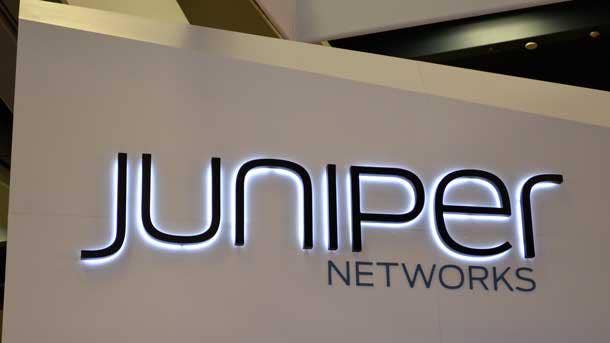
Visionary -- Juniper Networks (Mist Systems)
Juniper's newly-acquired Mist Systems has helped to expand the company’s wireless portfolio and can now offer enterprises a complete network access layer offering, according to Gartner, which includes multigigabit EX switching from Juniper and prestandards-based Wi-Fi 6 with a third radio for spectrum monitoring and security threat detection from Mist. The vendor also offers a 16-element BLE antenna array access points.
Strengths: Juniper’s Mist Edge provides the ability to extend the cloud microservices application environment to on-premises environments, which allows users to have a single management environment that can address remote and local campus network service application requirements.
Weaknesses: The Mist acquisition is still very new and must be integrated into the greater Juniper portfolio. Gartner said customers should verify and test that the functionality and differentiation needed for business decisions and automation can be delivered right now.
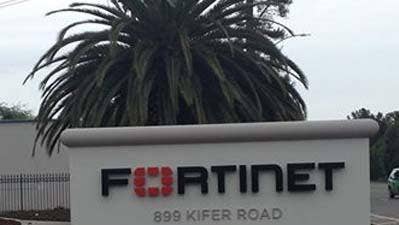
Niche Player -- Fortinet
Fortinet, with its strengths in security, offers a wired and wireless access ecosystem that is anchored by the FortiGate firewall product that includes an integrated WLAN controller and switch capability. Fortinet’s FortiGate, FortiCloud and FortiOS are core to its portfolio and offer automation, according to Gartner. Sunnyvale, Calif.-based Fortinet in 2018 acquired Bradford Networks and integrated the technology into its ecosystem as FortiNAC.
Strengths: Fortinet'sunified wired and wireless network architecture is built around a strong security architecture and offers simplified configuration, management and operational capabilities. Fortinet has also been very successful in integrating its acquired technology into its product line.
Weaknesses: While appealing to enterprises thanks to its security expertise, the vendor's underlying hardware portfolio often lacks models with the performance at scale to match software capabilities. Gartner said that Fortinet's lack of multigigabit ports on switches puts the portfolio at a disadvantage.
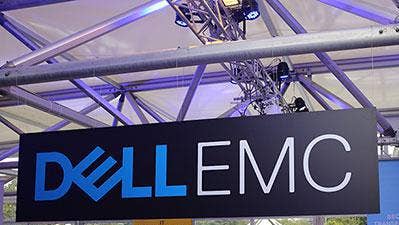
Niche Player -- Dell EMC
Dell EMC, a division of Dell Technologies, offers its full network stack through a combination of its own N-Series campus switches and WLAN equipment through OEM partnerships with Aerohive Networks, now part of Extreme Networks, and Ruckus, which is now part of CommScope. Dell’s global wired and wireless infrastructure business focuses on enterprise, education, public sector and healthcare/life sciences verticals, the report found.
Strengths: Dell brings a lot of credibility at the table. The company's global footprint for sales and support augments the capabilities of many of its OEM partners that could not support global customers otherwise, Gartner said.
Weaknesses: Because Dell relies on OEM partnerships for its WLAN infrastructure, Ruckus and Aerohive, it’s future with those partners are unclear as both have been recently acquired, analysts said. Dell EMC also lacks advanced enterprise capabilities in this segment of the market, including automation, central policy enforcement, intent-based networking analytics, AI/ML and overlay architectures.
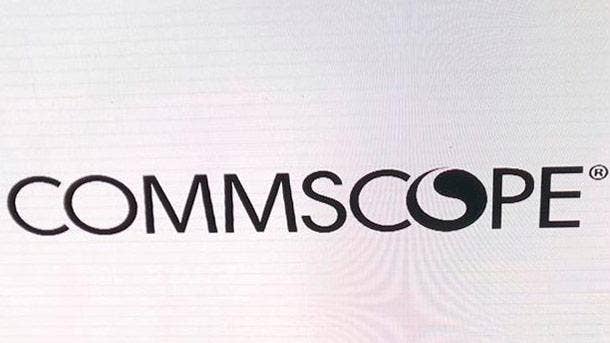
Niche Player -- CommScope (Ruckus Networks)
CommScope's Ruckus Networks, which was again acquired by CommScope from ARRIS this year and operates as its own business unit, offers a full portfolio of wired and wireless products with a focus on enterprise-wide central management via Ruckus SmartZoneOS. The Sunnyvale, Calif.-based vendor primarily targets the hospitality, education and government verticals. The Ruckus acquisition gave telecom giant CommScope a full range of wired and wireless networking offerings, the report found.
Strengths: Ruckus Networks provides a converged wired and wireless network controller-based architecture that integrates management though a unified control and management plane. Ruckus' Cloudpath Enrollment System allows for device onboarding for user and IoT devices across both the wired and wireless network.
Weaknesses: Gartner said that upon evaluation, Ruckus was still missing capabilities such as Layer 2 network overlay technologies, like analytics or AI-/ML integrated automation. The analysts warned that because CommScope is Ruckus’ third corporate owner since 2017, users should confirm they have access to the right global sales and support resources.

Niche Player -- ALE
ALE's unified wired and WLAN infrastructure portfolio is branded as Alcatel-Lucent Enterprise and the company continues to focus on its homegrown product lines, including the OmniSwitch fixed format campus switches, OmniAccess Stellar wireless access points, and OmniVista on-premises and software as a service (SaaS) network management systems.
Strengths: France-based ALE's OmniVista 2500’s features include predictive analytics that can suggest network configuration changes or firmware updates for uses such as capacity planning or incident management. According to Gartner, customer feedback is positive for the vendor's features and customer support.
Weaknesses: ALE and its channel partners serve customers in more than 50 countries globally, but most of the company's business is in 30 countries. The Latin American market outside of Brazil, Argentina or Mexico may not have access to as much post-sale support, the report warned.
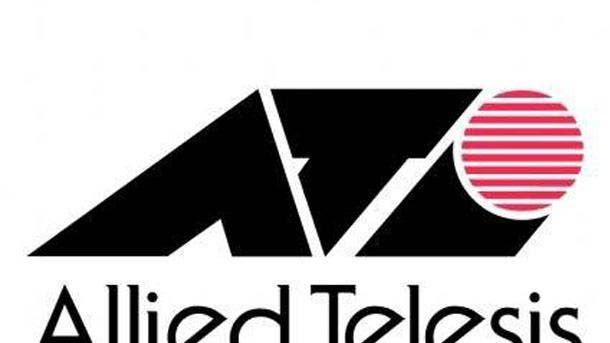
Niche Player -- Allied Telesis
Tokyo-based Allied Telesis offers a wired and wireless access layer portfolio that
can be managing with its Vista Manager EX or in the private or public cloud. All Allied Telesis products use the same operating system (AlliedWare Plus) for uniform functionality, support, migration and upgradability. The vendor's broad product line is largely suitable for midmarket customers and the company does most of its business through the channel.
Strengths: Allied Telesis' access points support its “channel blanket” architecture, which Gartner said simplifies channel planning and promotes seamless roaming in high-density environments by eliminating co-channel interference. The vendor also plans on adding SD-WAN later this year.
Weaknesses: Allied Telesis is limited in terms of its real-time traffic analysis, security behavioral analytics, and network assurance through AI/ML capabilities, the report found. Indoor location-based services through Vista Manager EX are planned for late 2019.

Niche Player -- H3C
H3C is a joint venture of Tsinghua Holdings and HPE. H3C has a large wired and wireless access layer and network management portfolio and predominantly serves the Chinese market, the company's home market. H3C provides unified wired/wireless management with the intelligent Management Center (iMC), a large on-premises-based management platform with a series of modules for applications such as user and device profiling, policy enforcement and network traffic analysis. H3C also offers Oasis, it's cloud platform which can be deployed in both private and public cloud environments.
Strengths: H3C's Oasis IoT platform offers management and automatic onboarding of IoT devices, certificate authentication and secure encrypted traffic. Oasis' operations and management functionality provides analytics that look at the health of network devices and users; analyze connection, authentication and interference issues; and can suggest network optimization techniques.
Weaknesses: H3C is limited in terms of geography and only offers 24/7 support is a few countries, including in its home in China. The network assurance capabilities of the Oasis operations and maintenance platform are largely centered on wireless connectivity only.

Niche Player -- Rohde & Schwarz (LANCOM Systems)
LANCOM Systems, a wholly owned, independently operating subsidiary of the international electronics company Rohde & Schwarz, offers an enterprise-grade portfolio of wired campus switches, wireless indoor and outdoor APs, and network management applications. The firm's primary management solution is LANCOM Management Cloud (LMC), which can automate configuration of the vendor’s wireless access points and configure wired campus switches. Gartner found that LANCOM specializes in midsize organizations in retailing, education and the public sector located in its core EMEA region.
Strengths: The German company is being helped by the Rohde & Schwarz acquisition, which gives the company global reach for marketing and deployment of its access network products. LANCOM’s wired and wireless LAN portfolio is also very competitively priced relative to the larger competitors on the market.
Weaknesses: Despite its growing global footprint, nearly all of the company's 2018 revenue came from Europe-based customers. Gartner said that customers considering LANCOM must determine that the vendor and its channel partners can provide sufficient local support in regions outside of Europe.
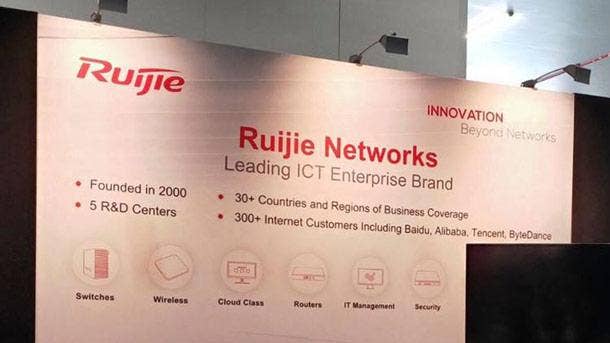
Ruijie Networks
Making its magic quadrant debut, Beijing-based Ruijie Networks offers a broad portfolio of access layer hardware and software. For wireless, the company offers a WLAN controller-based and controllerless solution that includes a “free” cloud-managed offering for small and midsize businesses. The company has a very focused verticalized strategy, Gartner said, appealing to businesses in education, transportation, hospitality, healthcare and finance.
Strengths: Ruijie's "aggressive" pricing strategy, with its strong focus on the small and midsize businesses is helping to set the company apart, according to Gartner. Its free Wi-Fi Cloud solution excludes licensing costs, regardless of the number of devices, and supports management of switches and routers/gateways.
Weaknesses: More than 75 percent of the company's revenue came from China, so customers in other regions should request partner references for implementation and support, the report said. Businesses looking to scale up should also check with Ruijie to ensure its products are capable of scaling.
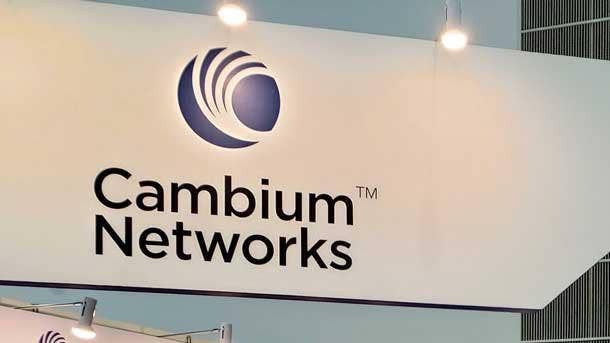
Niche Player -- Cambium Networks
Remote networking specialist and newbie to the Gartner Magic Quadrant Cambium Networks offers wireless infrastructure products for carriers and managed network service providers and its wired and wireless enterprise business largely targets retail and hospitality verticals. The provider, which went public in June, also completed the acquisition of the Xirrus WLAN business from Riverbed in August, which gave the vendor a WLAN controllerless and scalable offering, according to Gartner.
Strengths: The Rolling Meadows, Ill.-based provider's cnMatrix switching platform includes advanced capabilities such as policy-based automation and network segmentation, as well as policy integration between the wired and wireless segments. The Xirrus acquisition significantly expanded Cambium's portfolio.
Weaknesses: Gartner cautioned that although Cambium acquired a WLAN infrastructure portfolio suitable for enterprises, the company has very little enterprise experience. Cambium's product line so far lacks key enterprise features like security behavioral analytics, application SLAs and anomalous behavior detection.
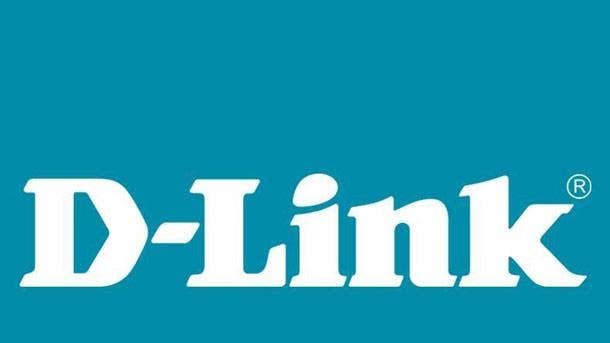
Niche Player -- D-Link
Taiwan-based D-Link products includes cloud-based and premises-based network management architectures that can support small and midsized customers. The vendor’s primary network management solutions are the Nuclias Cloud NMS and D-View 7, a web-based, on-premises option that uses local network probes to collect data from devices for local and remote network monitoring, management and troubleshooting. D-Link also uses this solution to identify and securing traffic from IoT devices.
Strengths: Gartner said that D-Link is a good, low-cost option offering a broad range of indoor and outdoor wireless access points, plus managed and unmanaged stackable Ethernet campus switches suitable for basic networking use cases. It's Nuclias Cloud subscription includes guest network access features such as customizable captive portal and social media login.
Weaknesses: D-Link doesn’t offer more complex capabilities beyond basic network management and service applications, like location-based service applications or security behavioral analytics. The provider also doesn't yet support machine learning features for automating access layer connectivity, which could limit its enterprise reach.
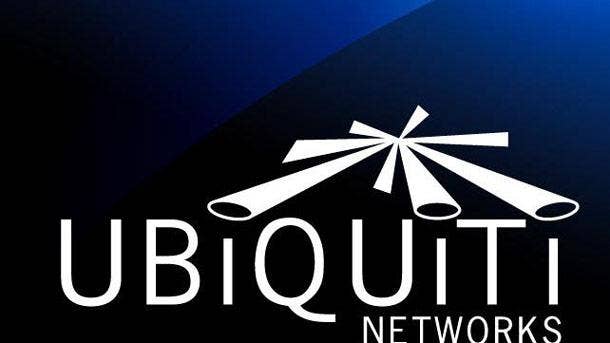
Niche Player -- Ubiquiti Networks
Networking specialist Ubiquiti Networks offers a low-cost connectivity option. Ubiquiti's UniFi management suite is available at no additional cost with its hardware, which lets Ubiquiti campus switches and APs be managed in a unified way either on-premises through a small controller, or as a license-free SaaS application that clients must install and maintain themselves. Despite its focus on small business and consumers, Ubiquiti, who landed on this year’s Magic Quadrant report for the first time., now generates more than 60 percent of its overall revenue from its UniFi enterprise line.
Strengths: Gartner said that overall, Ubiquiti clients report ease of deployment, use and management of Ubiquiti equipment using UniFi cloud controller software. Ubiquiti also offers hybrid cloud management both for remote management of branch sites through the UniFi Cloud solution and for on-premises wireless controller functionality utilizing the Cloud Key network device plugged into a campus switch.
Weaknesses: Gartner analysts warned that Ubiquiti doesn't offer advanced features, like dynamic segmentation of IoT endpoints or location-based services, today. Direct purchase of UniFi products through its website is currently limited to customers in the U.S. and Canada, and customers has said there is little or no negotiability on price for products acquired through the channel.

Niche Player -- TP-Link
TP-Link, a low-cost wired and wireless provider based in China and another Magic Quadrant first-timer, bundles its Omada public cloud-based network management solution with its products. Omada supports basic centralized AP management functions, including traffic and performance monitoring, synchronization of AP settings, access control, and rogue AP detection using a software controller.
Strengths: TP-Link’s products offer basic connectivity and management capabilities for cost-focused customers that do not have complex networking requirements. Despite being based in Shenzhen, the company sells a large volume of its switches and access points globally, unlike some of its China-based competition.
Weaknesses: TP-Link's management functionality does not include IoT-specific support right now, such as discovery, IoT endpoint monitoring or segmentation or containment of data traffic from those devices. The company's machine learning and AI features for automating access layer connectivity are also limited.

Niche Player -- Mojo Networks (Arista Networks subsidiary)
Mojo Networks, a subsidiary of Arista Networks after the 2018 acquisition, offers a portfolio of cloud-managed Cognitive Wi-Fi access points and applications that include prestandards-based Wi-Fi 6 and 802.3bz capabilities in its C-250 access point, as well as other access points to address target vertical market requirements. Mojo Networks has added WLAN assets to Arista's portfolio of core campus products.
Strengths: Mojo’s CloudVision WiFi can collect data from a third radio on the access points to profile and test the network. It can then use machine learning algorithms to create a network baseline that can automatically detect potential issues. The Santa Clara, Calif.-based company's CloudVision WiFi tracks when and why clients fail to connect to the network and can immediately report any issues.
Weaknesses: Gartner warned that it was unclear how deep the integration between Arista's switches is with the new Wi-Fi portfolio from Mojo. The provider is also offering limited location-based services, so clients with more requirements will need to consider overlay vendors to address the gaps.